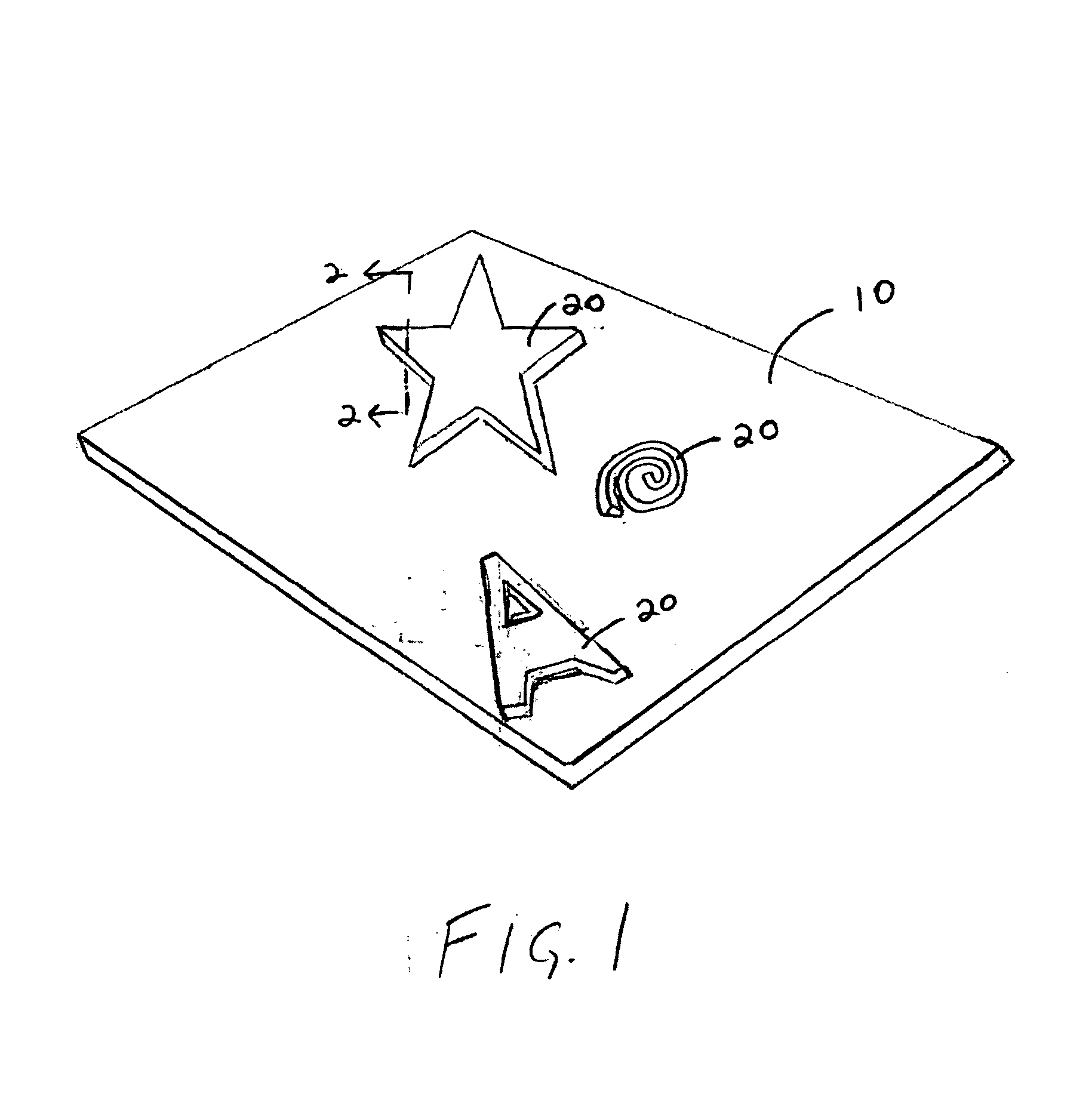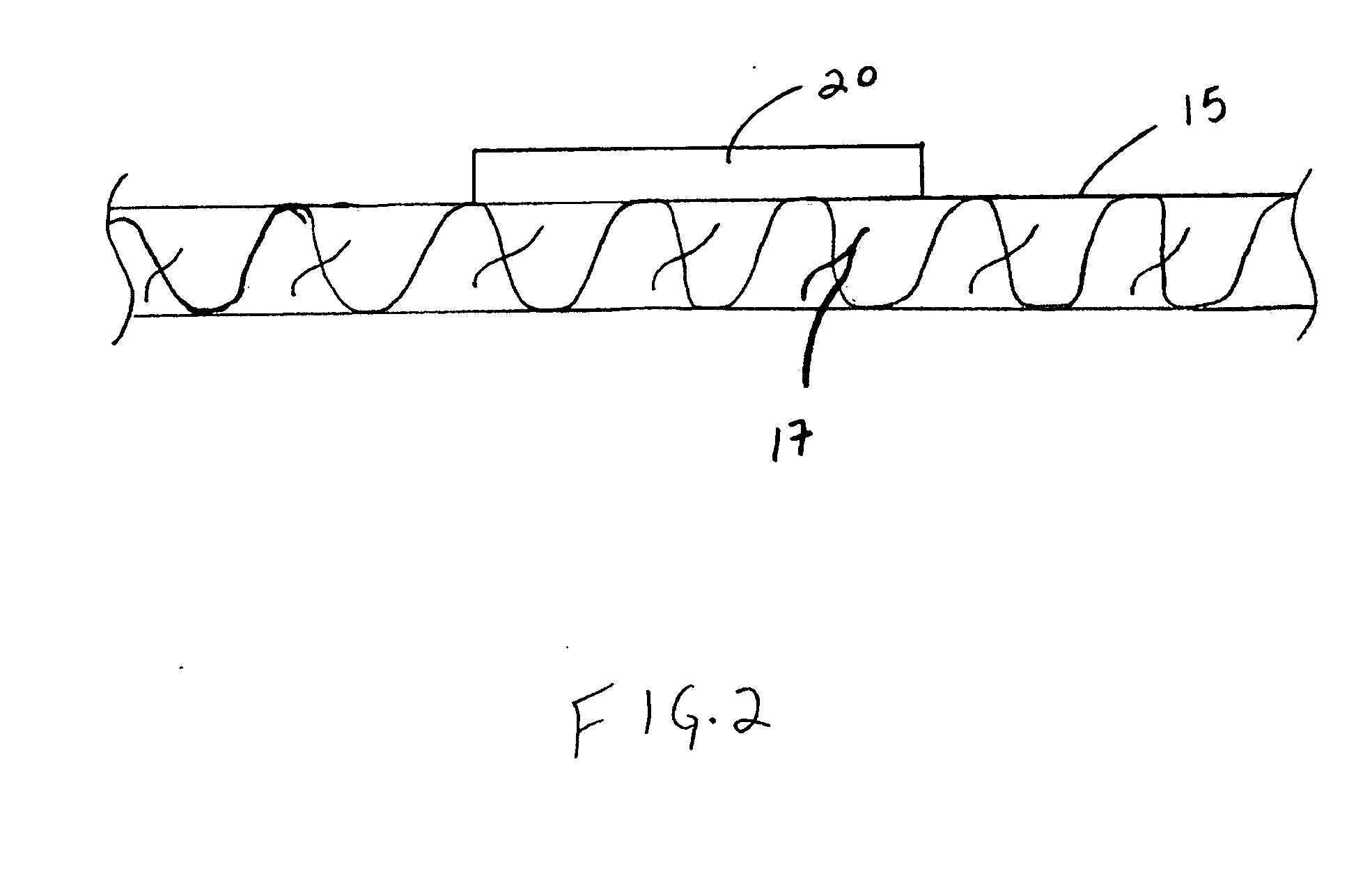Composition and method for burn out and dye transfer
a dye transfer and burnout technology, applied in the field of burnout and dye transfer, can solve the problems of time-consuming masking process, differential fiber removal, and multiple applications, and achieve the effect of stable shelf li
- Summary
- Abstract
- Description
- Claims
- Application Information
AI Technical Summary
Benefits of technology
Problems solved by technology
Method used
Image
Examples
example 1
[0042]In order to demonstrate the effectiveness of the technical teaching according to the invention, tests were carried out on the present invention. To this end a pseudoplastic liquid composition was formed including 1.5 grams of a polysaccharide such as, but not limited to, xanthan gum, locust bean gum, carrageenan or the like, 15 grams of an acidic salt such as but not limited to sodium bisulfate, 4 grams of a humectant such as but not limited to glycerin, and 79.5 grams of water, aging the composition 24-72 hours. A heated mixture (heated to 125° F.) of 40 grams of polyvinyl alcohol (Celvol® 24-203, distributed by Celanese, Ltd.) and 10 grams of sodium lauryl sulfate such as but not limited to Stepanol® WA-Paste distributed by Stepanol Company may be added to the composition. A disperse dye such as the PROsperse Scarlet D350 offered by Pro Chemical & Dye, was added to the mixture and stirred to homogeneity. The pseudoplastic mixture was then applied directly on a material conta...
example 2
[0043]An additional test was conducted by creating a pseudoplastic liquid composition including 6 grams of pectin acting as a combination polysaccharide i.e. a thickening agent and polymer (Genu® Pectin, 150 USA-SAG type B rapid set, commercially available from CP Kelco ApS, a Division of CP Kelco Incorporated) and 94 grams boiling water vortexed in a high speed blender. To this solution 15 grams of an acidic agent such as aluminum sulfate (pulverized) may be added, along with 20 grams of dextrose, a modifying agent, immediately vortexed in a high speed blender. The composition was applied to the material, preferably immediately after vortexed, for patterning the material through the Devoré process. Alternatively, the composition may be spread on a film forming substrate coated with a non-stick surface such as Teflon®, (Teflon® is a brand name and a registered trademark of E. I. du Pont de Nemours and Company), on a substantially planar surface, being generally flexible such as, but...
example 3
[0044]Still another test was conducted related to forming a dehydrated pseudoplastic liquid composition from the composition of EXAMPLE 1, pouring it on a substantially planar surface and placing it within a convection oven at 125 deg F. until a flexible film is formed, approximately 12 hours. The formed film may be flexible while exhibiting a heterogeneous composition consisting of regions of a white material overlying a colored film.
[0045]In the bulk portion of the colored film, the colored film is of uniform color (purple) and composition with inorganic salts, such as but not limited to sodium bisulfate uniformly covering the surface of the film and penetrating the film. The bottom surface of the bulk film, formerly contacting the substrate, is uniform and devoid of inorganic salts. The average thickness of the bulk portion of the film is 10 microns as measured with a scale under a stereomicroscope with a 20× magnification. Due to differential drying, the edges of the film exhibi...
PUM
| Property | Measurement | Unit |
|---|---|---|
| composition | aaaaa | aaaaa |
| amphoteric | aaaaa | aaaaa |
| thermoplastic | aaaaa | aaaaa |
Abstract
Description
Claims
Application Information
 Login to View More
Login to View More - R&D
- Intellectual Property
- Life Sciences
- Materials
- Tech Scout
- Unparalleled Data Quality
- Higher Quality Content
- 60% Fewer Hallucinations
Browse by: Latest US Patents, China's latest patents, Technical Efficacy Thesaurus, Application Domain, Technology Topic, Popular Technical Reports.
© 2025 PatSnap. All rights reserved.Legal|Privacy policy|Modern Slavery Act Transparency Statement|Sitemap|About US| Contact US: help@patsnap.com



